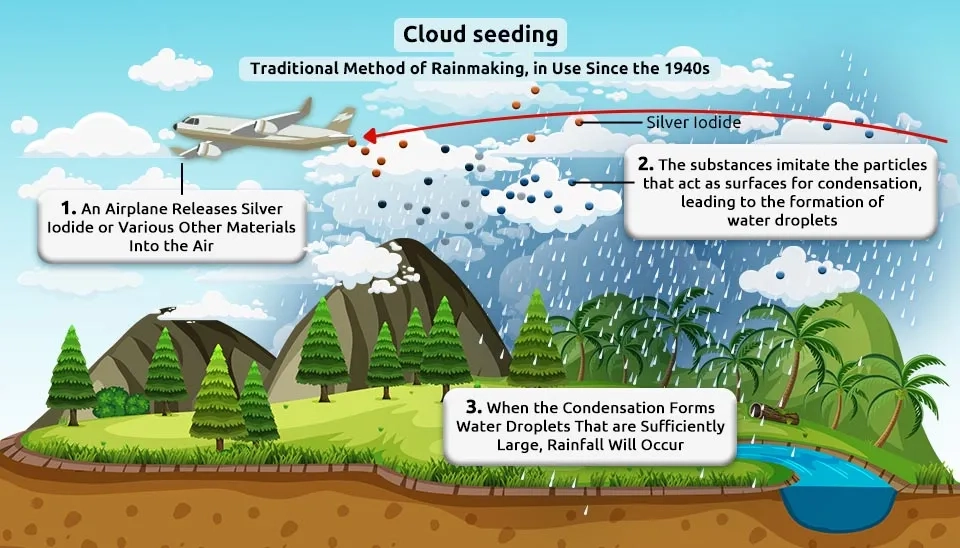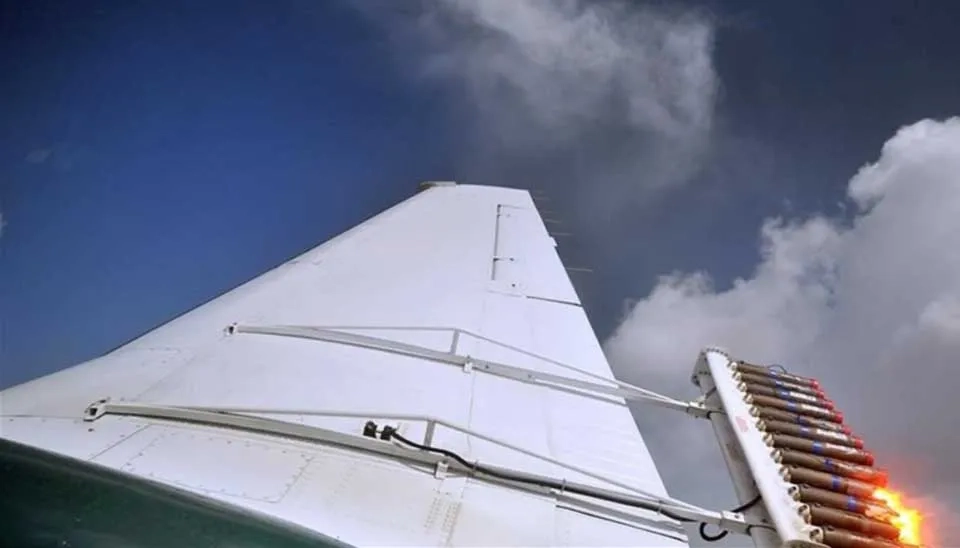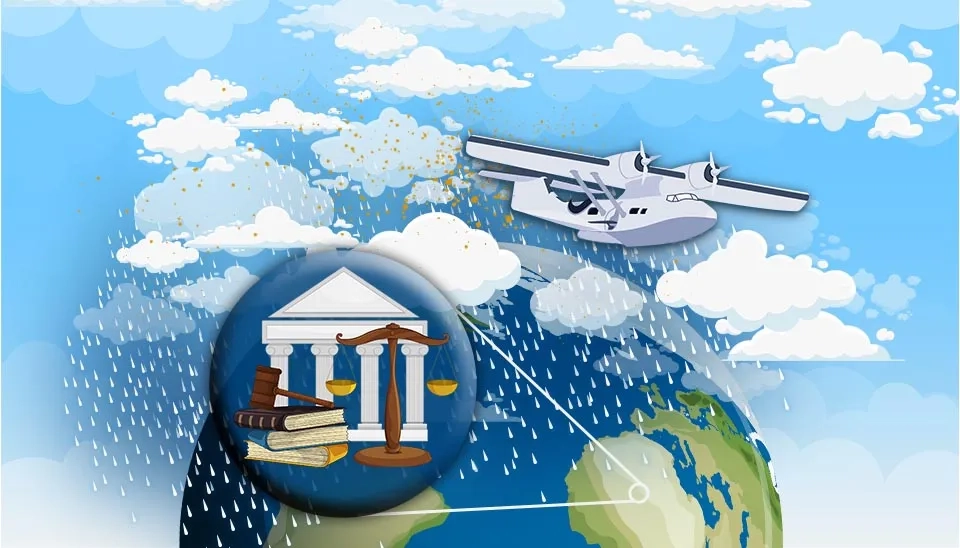
Calling for rain from the clouds, and ensuring plentiful water resources. This isn't merely a scene from a science fiction movie, it's the potential of cloud seeding. As climate change and global warming escalate and water scarcity emerges as a significant global concern, useful weather modification methods are increasingly essential. Cloud seeding is fundamental to increasing precipitation and exemplifies an advanced combination of meteorology, physics, and technology. This method shows potential for alleviating water shortages, aiding agriculture, refilling reservoirs, and even adjusting to a shifting climate by modifying natural processes in clouds. Precipitation enhancement is a category of cloud seeding that focuses on increasing natural rainfall (or snowfall) levels via airborne or ground-based methods that influence the microphysical processes within certain cloud types. Aiming at warm clouds, hygroscopic cloud seeding involves adding large artificial (hygroscopic) aerosol particles into clouds to boost the absorption of existing cloud liquid water beyond what would occur from the natural background aerosol population, which consists of relatively smaller particles (Al Hosari et al. 2021).

Table 1. Benefits and drawbacks of 7 methods of cloud seeding
Method | Description | Advantages | Disadvantages |
Static Cloud Seeding | Involves the introduction of ice nuclei into clouds to encourage precipitation in cold clouds. | Simple and widely used. Increases rainfall in cold clouds. | Limited for warm clouds. Environmental concerns over silver iodide. |
Dynamic Cloud Seeding | Injection of substances into clouds to enhance cloud development | Sustains precipitation. Enhances cloud growth. | Expensive and complex. Requires detailed meteorological data. |
Hygroscopic Cloud Seeding | Uses hygroscopic substances (such as salts) to encourage rainfall by promoting droplet growth, especially in warm clouds | Effective in warm clouds. Uses less toxic salts. | Ineffective in cold clouds. Potential soil and water salinity issues. |
Glaciogenic Cloud Seeding | Uses ice-forming substances to trigate precipitation in cold clouds | Effective for cold clouds. Increases snowpacks for water storage. | Useless for warm clouds. High cost and environmental risks from silver iodide. |
In this article, we examine the complex science of cloud seeding, investigating and contrasting 4 groundbreaking techniques that could transform our strategy for water management and climate adaptation, and we also examine legal issues related to cloud seeding, as this practice may be associated with different environmental and social impacts.
1. Static Cloud Seeding
In static-mode seeding, two primary assumptions are typically held: that a lack of natural ice crystals leads to delays or even the failure of precipitation formation under specific cloud conditions; and that moderate rises in ice crystal concentrations, achieved through glaciogenic seeding of these clouds, will enhance rainfall either by improving the efficiency of the already existing rain formation process or by triggering precipitation in clouds that would not have precipitated on their own (Gagin 1986). This technique entails dispersing a substance such as silver iodide into clouds. The silver iodide acts as a nucleus for moisture to gather and form droplets. The clouds already contain moisture, but silver iodide effectively enhances the ability of rain clouds to release their water.

Physical research and conclusions derived from statistical cloud seeding experiments indicate that the time frame for precipitation augmentation through the static method of cloud seeding is more restricted than previously believed. The opportunity for cloud seeding seems restricted as the static method of cloud seeding has proven to induce the anticipated changes in cloud microstructure, such as heightened levels of ice crystals, decreased amounts of supercooled liquid water, and accelerated precipitation generation in clouds, such as: (Malil et al., 2018)
1) Clouds that are somewhat cold-based that develop in temperatures below freezing, frequently holding supercooled water droplets, ice crystals, or a combination of the two
2) Clouds with upper temperatures between -10 °C and -25 °C
3) A timeframe constrained by the presence of substantial supercooled water until it is depleted by entrainment and natural precipitation events.
The restricted range of possibilities for increasing rainfall through the static approach to cloud seeding that has surfaced lately may clarify why certain cloud seeding trials have succeeded, while others have shown either inferred decreases in rainfall from seeded clouds or no impact. An effective experiment in one area does not ensure that planting in another area will succeed unless all environmental factors and seeding methods are duplicated (Bruintjes 1999).
2. Dynamical Cloud Seeding
While the objective in the static seeding mode is to attain approximately 1 to 10 ice crystals per liter at temperatures above -15C, in the dynamic seeding mode, the target concentration of ice crystals is typically around 100 to 1000 per liter. This aligns with seeding approximately 200 to 1000 grams of silver iodide in flares released directly into the strong supercooled liquid water updrafts within cumulus clouds (Cotton 1999) . The idea of dynamic seeding involves introducing adequate ice nuclei into cold clouds to quickly cause them to freeze. Because of seeding, the liquid water in the cold cloud transforms into ice particles, which releases latent heat. It boosts buoyancy and consequently elevates the cloud's upward movement. In optimal circumstances, it leads to increased cloud formation, higher water vapor levels, and enhanced precipitation outcomes. Moreover, the formation of precipitation can lead to stronger downward movement and engagement with the convective surroundings. The procedure is regarded as more intricate than static cloud seeding since it relies on a series of events functioning correctly. Dynamic cloud seeding can enhance both the depth of clouds and the intensity and duration of rainfall. This can be achieved by spreading chemicals using aircraft or through devices located on the ground (Gagin 1986). For instance, aircraft can ignite and spread silver iodide flares as it navigates through a cloud.

In a pioneering study of dynamical cloud seeding conducted in west Texas by Rosenfeld and Woodley in 1993, the examination of 183 convective cells indicated that seeding boosted the maximum cloud height by 7%, the cell areas by 43%, the durations by 36%, and the rain volumes of the cells by 130%. In general, the findings are promising; however, these minor enhancements in the vertical growth of the clouds do not align well with previous exploratory seeding studies (Rosenfeld et al. 2010).
3. Hygroscopic Cloud Seeding
Hygroscopic seeding involves introducing seed particles close to the base of convective clouds to either promote or diminish precipitation via several intricate microphysical processes. Initial experiments (in South Africa, India, Thailand, and Mexico) established the basis for hygroscopic seeding (Gayatri et al., 2023). This method of weather modification is designed to accelerate droplet coalescence in warm liquid clouds, resulting in the formation of larger droplets that initiate precipitation (Renggono et al., 2022). Cloud seeding materials usually contain large salt particles of various compositions, with particle size varying based on the injection technique (e.g., ground salt particles, combustion flares); however, a particle diameter of a few micrometers is generally regarded as ideal for increasing rainfall (Tonttila et al., 2022). These particles spread through ground-based generators or flares. Ground-based generators may utilize air-based dispersion systems for salt powders or pyrotechnic flares. They are usually utilized in mountainous areas where the relative humidity exceeds 50%. Flares may include various kinds of salts, like potassium or calcium.

Promising experimental findings on hygroscopic seeding using premade salt powders and the flare burning technique have been documented. Nonetheless, the results have been observed to vary under different meteorological conditions and ambient aerosol levels (e.g., marine versus continental) (Kuba and Murakami 2010).
4. Glaciogenic Cloud Seeding
The concept of glaciogenic cloud seeding involves initiating ice formation in supercooled clouds, resulting in the growth of ice crystals in size that eventually fall to the ground as snow. During the late 1940s, Vincent Schaefer and Bernard Vonnegut conducted experiments by injecting ice-inducing (or “glaciogenic”) particles into a supercooled liquid cloud, initially in a cloud chamber and later from an aircraft. Their experiments indicated that this glaciogenic seeding enhances the quantity of ice crystals, which can expand by utilizing the supercooled liquid water (SLW) and subsequently precipitate. A significant portion of the excitement for weather modification during the 1950s–1980s can be linked to their efforts (Geerts and Rauber 2022).

Glaciogenic cloud seeding typically involves dispersing effective ice nuclei, like silver iodide particles or dry ice (solid carbon dioxide), into the cloud to induce heterogeneous ice nucleation. An alternative option is to utilize liquid or solid carbon dioxide to locally briefly cool the air to −80°C. This will locally cause uniform freezing of droplets within the cloud, in contrast to heterogeneous or aerosol-mediated freezing. (Laaksonen and Malila 2021). Glaciogenic cloud seeding is typically utilized on convective clouds or winter orographic clouds because these cloud types are most suitable for the process of enhancing precipitation through ice crystal formation.
Legal Aspects of Cloud Seeding
While cloud seeding methods proved to be successful in producing rain that can help to mitigate the impacts of climate change, aiding agriculture, and refilling reservoirs, there are environmental concerns related to this topic. Cloud seeding is linked to various environmental and social effects that raise concerns among both scientists and policymakers. These effects include pollution of water and air, soil erosion, and geopolitical issues, among others. Cloud seeding carries the risk of contaminating water sources with the chemicals involved in the seeding procedure. This may lead to negative impacts not just for individuals in the region but also for those along the same waterways and surrounding locations. Soil erosion and air contamination are additional environmental effects caused by the process. The method of releasing substances (such as silver iodide) into the air can lead to the deposition of particles that add to air pollution, negatively impacting both human beings and wildlife (Simon et al., 2024) . Cloud seeding may also result in geopolitical issues—one of the limited social effects. The USA viewed cloud seeding in geopolitics as a military strategy aimed at increasing the likelihood of floods (by altering rain patterns in the area) to hinder the Vietnamese army and promote the relocation of both soldiers and civilians (Conklin et al. 2024).

On a global scale, the UN Convention on the Law of Non-Navigational Uses of International Watercourses allows nations to engage in cloud seeding, but requires them to avoid causing damage to the environments of other nations. Article 7 of the Convention on Biological Diversity and the Nagoya Protocol demand that cloud seeding must not harm biodiversity and mandate obtaining community approval before proceeding with such activities. Moreover, the Convention on Long-Range Transboundary Air Pollution regulates air pollution emissions associated with cloud seeding. On a national level, the US Weather Modification Act mandates obtaining permits from appropriate state agencies to guarantee adherence to environmental and safety regulations. Likewise, the Chinese Regulation on Weather Modification requires the reduction of negative impacts from cloud seeding operations. Nonetheless, these legal structures face difficulties in their application, enforcement, and coordination. These difficulties mostly concern cross-border cloud seeding operations and the participation of various stakeholders with opposing interests.
Conclusion
Cloud seeding has surfaced as a hopeful weather alteration method with considerable potential to tackle essential issues in agriculture, water resource management, and alleviating water deficits. This article has examined the four main techniques—Static, Dynamic, Hygroscopic, and Glaciogenic Cloud Seeding—highlighting their processes, advantages, and drawbacks. Although each technique provides distinct advantages suited to various atmospheric circumstances and goals, the success of cloud seeding still depends on factors like cloud species, environmental state, and seeding substance. While these methods present customized options for boosting rainfall and increasing water supply, they also raise environmental and legal issues. Possible ecological hazards, like the unintentional impacts of chemical substances on ecosystems and water quality, necessitate comprehensive assessment. Moreover, the legal and ethical considerations of modifying weather systems, particularly in relation to international borders or common water resources, present intricate problems regarding jurisdiction, fairness, and possible disputes. As research progresses, it is essential to tackle these environmental and legal issues to guarantee that cloud seeding is implemented responsibly, sustainably, and fairly for the advantage of society and the environment.
